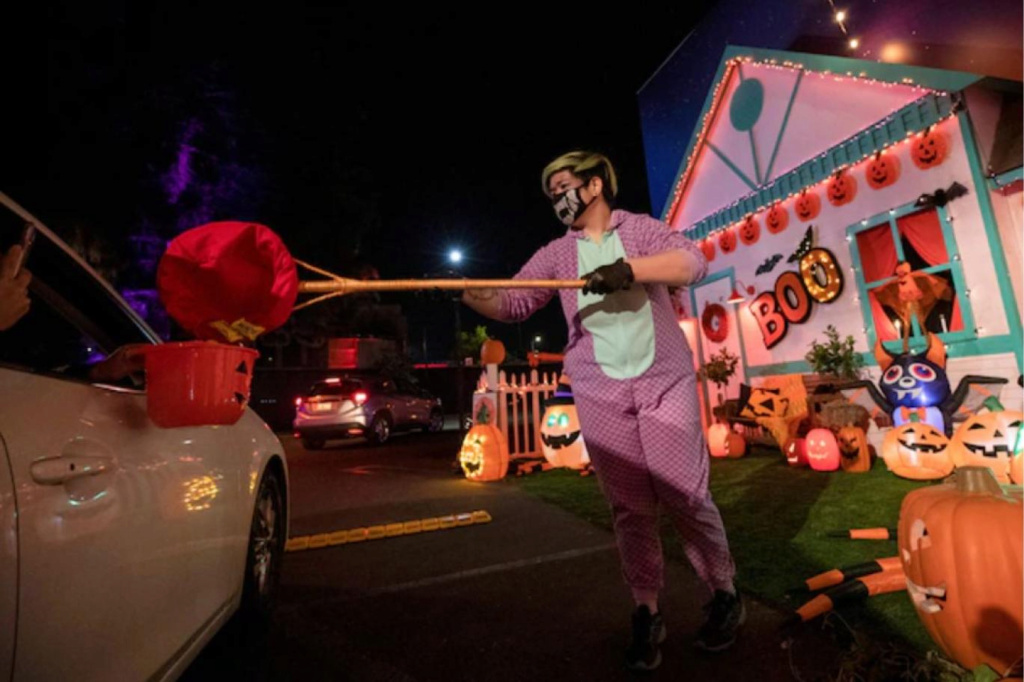Halloween: its roots and customs
Since the Middle Ages, people in the British Isles have been brightly dressed and going door to door performing for food and drink.
Trick-or-treat is one of the main traditions of Halloween (Reuters)
Halloween is an ancient festival with Celtic origins, more specifically the Samhain festival, which marked the beginning of winter and the time when fairies and spirits must be appeased, and is believed in popular thought to be the day when the souls of those who died that year passed to the underworld.
Among the main traditions of the holiday is the "trick or treat" tradition that has spread during Halloween celebrations in the United States and Canada since the early twentieth century, but the tradition of children going door-to-door in search of candy exists in many parts of the world, with He identified one European who is widely recognized as the ancestor from whom the North American tradition sprang.
Since the Middle Ages, people in the British Isles have been dressed up brightly for the holidays and going door to door performing for thanksgiving in the form of food and drink. This tradition still exists today in Scotland and Ireland under the name 'guising' and involves children dressed in fancy dress rather than theatrical performances.
Like many Christian holidays, All Saints' Day (November 1) and its eve, All Hallows' Day, coincide with the pagan festival and the "trick or treat" tradition is practiced in Portugal on the first day of November. Halloween also has great significance in Mexico (observed there as a day of remembrance of the dead) but the American tradition of Halloween has also been adopted, in large measure in the northern and central parts of the country, where the custom is called calaverita (meaning the little skull) after Sugar skulls that are gifted at the festival.
Thus "Mexican Halloween" became the Day of the Dead, a combination of the ancient Aztec rites of remembrance of the dead and the Catholic All Saints' Day spread by the Spanish conquistadors in Mexico.
With the increasing Spanish influence in the United States, Day of the Dead celebrations have also become a rumor, although it is often another costume party.
But scary costumes and the "trick-or-treat" tradition are not tied to a single history: children in Scandinavia practice it on Easter, while children in northern Germany and southern Denmark perform it on New Year's Eve. In southern Germany, Austria, Switzerland, the Netherlands, and the province of Flanders in Belgium, sweets are given not as a result of claimed threats, but as a token of thanks for the songs children sing on November 11 (Saint Martin's Day), and Eid songs for sweets are performed during Ramadan in Central Asia.
After its spread in the United States, Halloween has in recent years become very popular in the United Kingdom , where it has turned into one of the largest cultural and commercial events in the country. The spread of Halloween traditions, such as dressing up, carving pumpkins and making "candy or trick-or-treaters", has led to a spike in consumer spending. This spending is increasing annually and has exceeded 400 million pounds (461 million US dollars) in 2018.
The United States leads the way in spending on Halloween, with annual spending for 2022 expected to reach an all-time high of about $11 billion. More than two-thirds of consumers in the United States said they plan to celebrate Halloween, including by decorating their homes, carving pumpkins and wearing spooky costumes. Nearly 70 percent of Americans say they intend to hand out sweets on the last night of October, coinciding with Halloween.
source:websites


